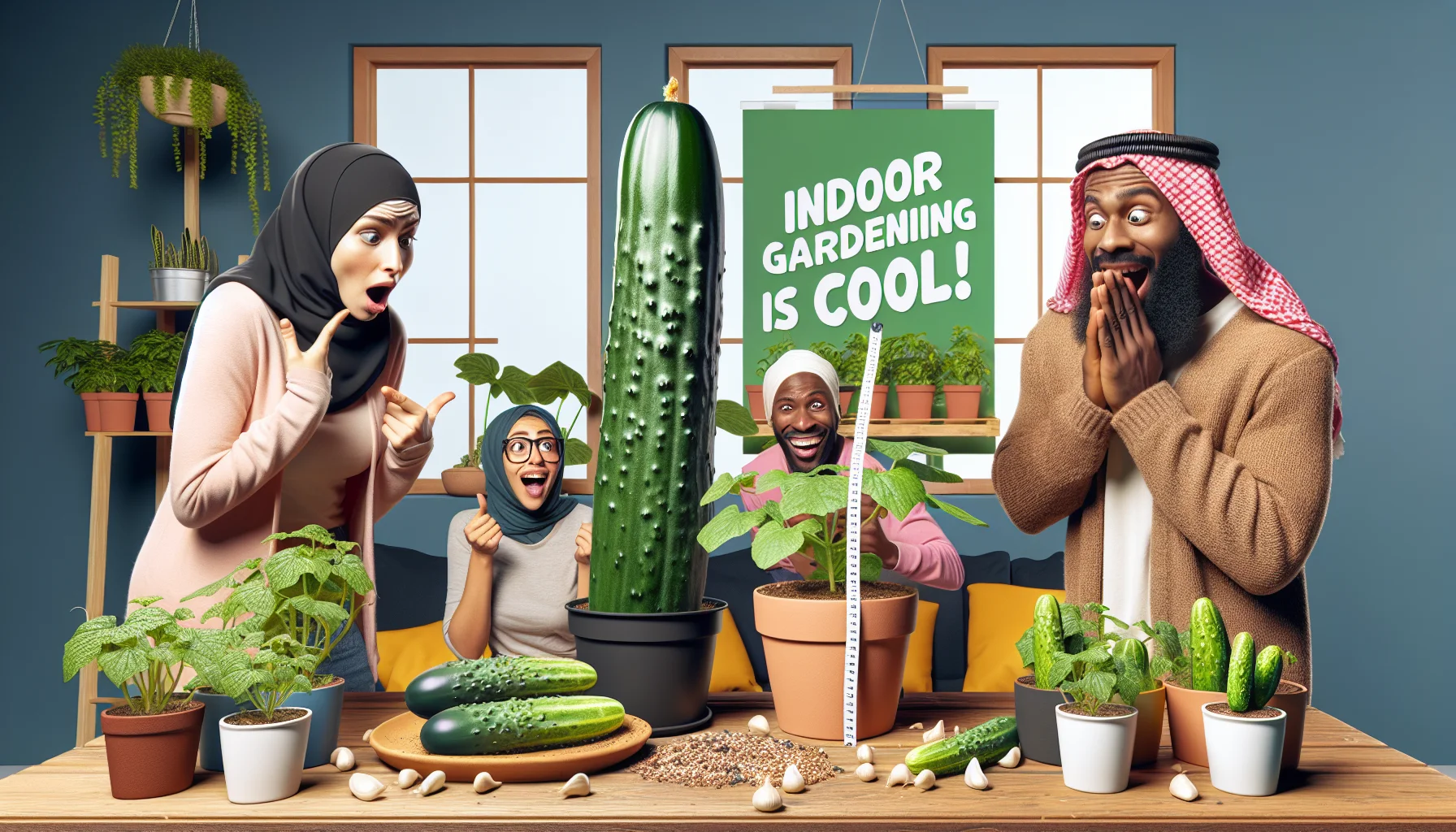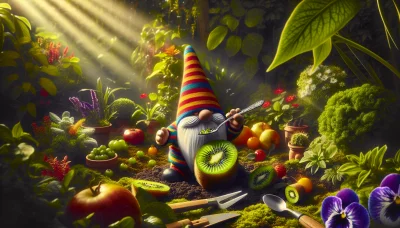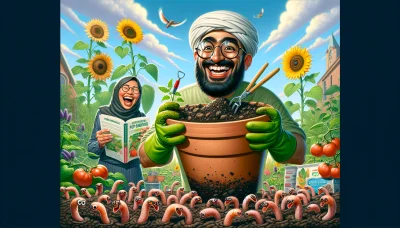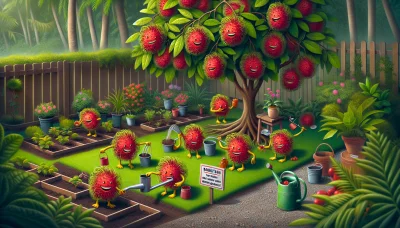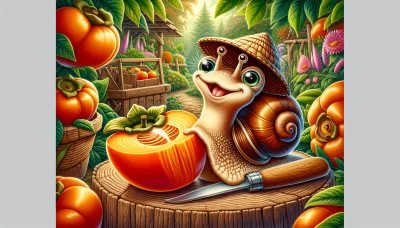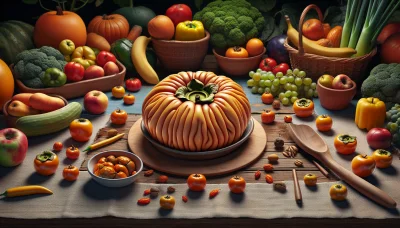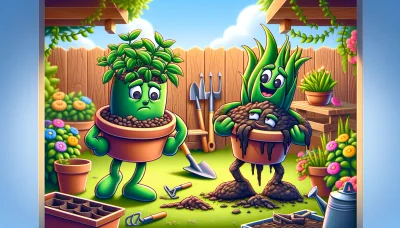Growing cucumbers indoors Quiz
Test Your Knowledge
Question of
Growing Cucumbers Indoors: A Comprehensive Guide
Growing cucumbers indoors can be a rewarding experience for any gardening enthusiast. This method allows you to enjoy fresh cucumbers year-round, regardless of the weather conditions outside. Indoor cultivation offers the benefits of controlled temperature, humidity, and lighting conditions, which can lead to healthier plants and potentially higher yields. Additionally, growing cucumbers indoors reduces the risk of pests and diseases that often plague outdoor gardens. This guide will provide you with the essential knowledge and tips to successfully grow cucumbers inside your home, from selecting the right varieties to the final harvest.
What You Need to Start
- Pots or containers with good drainage
- High-quality potting soil
- Cucumber seeds or seedlings
- Adequate lighting (natural or artificial grow lights)
- Steady temperature between 65°F and 75°F
- Humidity levels around 40-70%
- Trellis or support for climbing varieties
- Watering can or system for consistent moisture
- Fertilizer suitable for vegetables
Step-by-Step Guide to Planting
Planting cucumber seeds indoors is a rewarding process that begins with soil preparation. Start by selecting a high-quality potting mix, ensuring it is loose and well-draining to promote healthy root growth. Fill your pots or seedling trays with the soil, leaving about an inch of space from the top. Plant the cucumber seeds about ½ inch deep into the soil, covering them lightly with the potting mix. Water the seeds gently but thoroughly to moisten the soil without washing the seeds away. Place the pots in a warm, sunny spot or under grow lights to encourage germination, which typically occurs within 3 to 10 days. Keep the soil consistently moist but not waterlogged, and watch as your cucumber seedlings begin to grow, ready for transplanting once they are strong enough to handle outdoor conditions.
Caring for Your Indoor Cucumbers
- Watering: Ensure the soil is consistently moist but not waterlogged. Water when the top inch of soil becomes dry.
- Fertilizing: Use a balanced, water-soluble fertilizer every two weeks during the growing season.
- Pruning: Regularly prune dead or yellow leaves and thin out overcrowded areas to improve air circulation.
Pest Management and Diseases
Indoor cucumber cultivation, while providing a controlled environment, is not immune to the challenges of pests and diseases. Common pests that afflict cucumbers include spider mites, whiteflies, and aphids. These pests not only damage the plants by feeding on the sap but can also spread diseases. Spider mites, for instance, thrive in warm, dry conditions and can quickly infest plants, leading to yellowing or browning of leaves. Whiteflies, on the other hand, are known for their ability to develop resistance to chemical treatments, making them particularly challenging to manage. Aphids, small sap-sucking pests, can cause leaves to curl and stunt plant growth. To manage these pests, it is crucial to maintain a clean growing environment and monitor plants regularly for early signs of infestation. Introducing natural predators like ladybugs can be an effective biological control method for aphids and other pests. Proper ventilation and maintaining optimal humidity levels can also deter pest infestation. For diseases such as powdery mildew and downy mildew, which are common in cucumbers, ensuring good air circulation and avoiding overhead watering can help prevent outbreaks. In cases where chemical intervention is necessary, using pesticides approved for indoor use and following the manufacturer's instructions carefully can help manage pest populations without harming the plants. Adopting an integrated pest management (IPM) approach, which combines cultural, physical, biological, and chemical control methods, can be an effective strategy for managing pests and diseases in indoor cucumber cultivation.
Harvesting Your Cucumbers
Knowing when your cucumbers are ready to harvest is key to enjoying their fresh, crisp taste. Typically, cucumbers are ready to pick when they are firm, green, and have reached their variety-specific size, usually around 6 to 8 inches long for slicing varieties and 3 to 5 inches for pickling ones. For cucumbers grown indoors, ensure they receive ample light and maintain a consistent temperature for optimal growth. When harvesting, use a sharp knife or scissors to cut the cucumber from the vine rather than pulling it to avoid damage to the plant. Regular harvesting encourages the plant to produce more cucumbers, so check your plants every other day once they start to fruit. Remember, cucumbers are best when harvested early in the morning when temperatures are cooler, resulting in a crisper, fresher cucumber.
Troubleshooting Common Issues
-
Yellowing Leaves
This can be a sign of overwatering or poor nutrition. Ensure the plant is not sitting in water and feed with a balanced fertilizer suitable for vegetables.
-
Poor Fruit Development
Insufficient pollination or nutrient imbalances can lead to poor fruit development. Hand pollinate flowers with a small brush and use a high-potassium fertilizer to encourage fruiting.
-
Wilting Plants
Wilting can be caused by either too much or too little water. Check the soil moisture and adjust your watering schedule accordingly. Ensure good drainage and avoid waterlogging.
-
Leggy Seedlings
This issue often arises from insufficient light. Position your plants closer to a natural light source or use grow lights to provide the necessary intensity and duration of light.
-
Pests and Diseases
Regularly inspect your plants for signs of pests and diseases. Use organic pesticides and fungicides to manage infestations and diseases early on.
